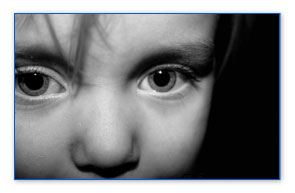 Note from CCHR: The audacity of psychiatry never ceases to amaze us. Take the issue of electroshock ‘treatment’,
Note from CCHR: The audacity of psychiatry never ceases to amaze us. Take the issue of electroshock ‘treatment’,Electroconvulsive Therapy in Pediatric Psychiatry
Electroconvulsive therapy (ECT) is a controversial practice of dealing with mental disorders and one that has attracted its fair share of detractors. Despite the fact that it was first used as long ago as 1938, it still carries with it a stigma that some find difficult to overlook. One might believe this method is one as harebrained as those employed in the middle ages to rid people of the demons that had possessed their minds. Unlike holes drilled into the skull, the use of ECT as a form of psychiatric treatment has continued into the present day. However, the ethical questions and legislations governing its practice mean that its use in the resolution of the severe symptoms of mental disorders in children is bound to be a delicate topic.
In recent years, the research on the effective ECT has been extended to its application in pediatrics. A recent study provides hope that the may be beneficial in the treatment of the more severe symptoms of autism as well as mood disorders in children. This study, undertaken by Wachtel, Jaffe and Kellner, examined the effectiveness of pediatric ECT in treating the symptoms exhibited by an autistic prepubescent boy with bipolar affective disorder. The 11-year-old child had been diagnosed with autism when he was two and a half years old. This combined with his unpredictable mood swings had resulted in him behaving aggressively towards his own family and caregivers. However the damage meted out to those who looked after him in no way compared to that he inflicted on himself. Photographs included with the research show the child with his face and hands bloodied from self-abuse.
A slew of pharmaceuticals prescribed to subdue these symptoms had no discernible effect on his behavior. As an inpatient, he was put on a new combination of drugs that led to some improvement but the violent symptoms returned in full force shortly after he was discharged. It was possibly the severity of the situation that led to his case being accepted as a candidate for pediatric ECT.
Eight ECT treatments were conducted on a three-times-a-week basis. By the fourth treatment, the child who had been unable to go to school or interact with other children due to “safety concerns” and needed two adult supervisors around him at all times, could now enjoy family outings and community interaction. He was reported to be “happy and calm” and, for what might have been the first time, could sleep soundly through the night. The paper closes with a recent picture of this boy we know only as J., sliding down a tunnel in a public playground smiling broadly for the camera. Following the end of J.’s ECT treatment he still required “maintenance” ECT on a weekly or fortnightly basis to prevent the symptoms from returning. While his therapists work on weaning him off the treatment entirely, his parents and carers continue to report on his ever-increasing cache of achievements, most recently spending five days away at summer camp.
Lee Wachtel has done some extensive work in the field of autism and the catatonic symptoms that accompany it in its more severe forms. She tends to focus her research on disorders that affect children and adolescents and the effectiveness of ECT on cases that are exceptionally severe. In addition to this study, Wachtel together with Griffin, Dhossche and Reti also put together a paper documenting their work with 14 year old autistic boy who was exhibiting the standard symptoms of catatonia including waxy flexibility, mutism and unresponsiveness. In this case, the symptoms were non-violent but more resistant to treatment. A number of variants of electroconvulsive therapy were utilised before a change in behavior was evident. However, those changes in behavior include independent performance of all activities of daily living, an active return to academics via home-schooling, and participation in sports including running, swimming, basketball and even horse-riding as a component of equine therapy.
The use of ECT in pediatrics is inadequately researched, not just because of the stigma associated with the practice,, but also because of legislation that governs the administration of this form of therapy on minors due to ethical concerns. In addition, Croarkin et al say that most psychologists who deal with adolescent and child psychiatry are not sufficiently trained in the use of ECT. Even more sparsely researched are the long term effects of ECT on its recipients. Though a handful of longitudinal studies do exist that attempt to cover this, the standard of the research methods employed remains ambiguous. Studies such as those conducted by Wachtel and others like her demonstrate the almost immediate benefits ECT has to offer in the field of pediatric mental health. However the question remains as to whether these benefits will hold in the long run without causing in any additional damage to the brain. Unfortunately, the answer is one we will have to wait for, but till then we can hope.
http://brainblogger.com/2011/05/30/electroconvulsive-therapy-in-pediatric-psychiatry/

